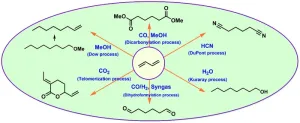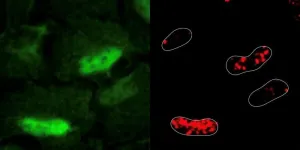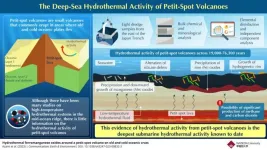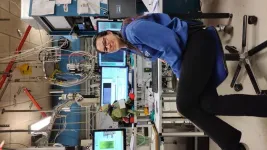(Press-News.org) For Embargoed Release: June 1, 2023 at 9:00 am Eastern Time USA
Media Contacts: Kathy Fackelmann, kfackelmann@gwu.edu
WASHINGTON (June 1, 2023)—While ingestible video capsule endoscopes have been around for many years, the capsules have been limited by the fact that they could not be controlled by physicians. They moved passively, driven only by gravity and the natural movement of the body. Now, according to a first-of-its-kind research study at George Washington University, physicians can remotely drive a miniature video capsule to all regions of the stomach to visualize and photograph potential problem areas. The new technology uses an external magnet and hand-held video game style joysticks to move the capsule in three-dimensions in the stomach. This new technology comes closer to the capabilities of a traditional tube-based endoscopy.
“A traditional endoscopy is an invasive procedure for patients, not to mention it is costly due to the need for anesthesia and time off work,” Andrew Meltzer, a professor of Emergency Medicine at the GW School of Medicine & Health Sciences, said. “If larger studies can prove this method is sufficiently sensitive to detect high-risk lesions, magnetically controlled capsules could be used as a quick and easy way to screen for health problems in the upper GI tract such as ulcers or stomach cancer.”
More than 7 million traditional endoscopies of the stomach and upper part of the intestine are performed every year in the United States to help doctors investigate and treat stomach pain, nausea, bleeding and other symptoms of disease, including cancer. Despite the benefits of traditional endoscopies, studies suggest some patients have trouble accessing the procedure.
In fact, Meltzer got interested in the magnetically controlled capsule endoscopy after seeing patients in the emergency room with stomach pain or suspected upper GI bleeding who faced barriers to getting a traditional endoscopy as an outpatient.
“I would have patients who came to the ER with concerns for a bleeding ulcer and, even if they were clinically stable, I would have no way to evaluate them without admitting them to the hospital for an endoscopy. We could not do an endoscopy in the ER and many patients faced unacceptable barriers to getting an outpatient endoscopy, a crucial diagnostic tool to preventing life-threatening hemorrhage,” Meltzer said. “To help address this problem, I started looking for less invasive ways to visualize the upper gastrointestinal tract for patients with suspected internal bleeding.”
The study is the first to test magnetically controlled capsule endoscopy in the United States. For patients who come to the ER or a doctor’s office with severe stomach pain, the ability to swallow a capsule and get a diagnosis on the spot – without a second appointment for a traditional endoscopy – is a real plus, not to mention potentially life-saving, says Meltzer. An external magnet allows the capsule to be painlessly driven to visualize all anatomic areas of the stomach and record video and photograph any possible bleeding, inflammatory or malignant lesions.
While using the joystick requires additional time and training, software is being developed that will use artificial intelligence to self-drive the capsule to all parts of the stomach with a push of the button and record any potential risky abnormalities. That would make it easier to use the system as a diagnostic tool or screening test. In addition, the videos can be easily transmitted for off-site review if a gastroenterologist is not on-site to over-read the images.
Meltzer and colleagues conducted a study of 40 patients at a physician office building using the magnetically controlled capsule endoscopy. They found that the doctor could direct the capsule to all major parts of the stomach with a 95 percent rate of visualization. Capsules were driven by the ER physician and then the study reports were reviewed by an attending gastroenterologist who was physically off-site.
To see how the new method compared with a traditional endoscopy, participants in the study also received a follow up endoscopy. No high-risk lesions were missed with the new method and 80 percent of the patients preferred the capsule method to the traditional endoscopy. The team found no safety problems associated with the new method.
Yet, Meltzer cautions that the study is a pilot and a much bigger trial with more patients must be conducted to make sure the method does not miss important lesions and can be used in place of an endoscopy. A major limitation of the capsule includes the inability to perform biopsies of lesions that are detected.
The study, “Magnetically Controlled Capsule for Assessment of the Gastric Mucosa in Symptomatic Patients (MAGNET): A Prospective, Single-Arm, Single-Center, Comparative Study,” was published (insert date) in iGIE, the open-access, online journal of the American Society for Gastrointestinal Endoscopy.
The medical technology company AnX Robotica funded the research and is the creator of the capsule endoscopy system used in the study, called NaviCam®.
-GW-
END
PHILADELPHIA, UNITED STATES & HANOI, VIETNAM [June 1, 2023] — The National Comprehensive Cancer Network® (NCCN®)—a not-for-profit alliance of leading cancer centers in the United States—today announced the signing of a Memo of Understanding (MOU) with Vietnam National Cancer Hospital (“K Hospital”) and the Vietnam Cancer Association to work together to improve standards for cancer care throughout the country. Five delegates from NCCN visited Hanoi May 24-26 to sign the MOU and pilot the creation of NCCN Harmonized Guidelines™ for Vietnam.
“We are honored to collaborate with in-country experts to develop and validate Vietnamese harmonizations ...
The use of 1,3-butadiene as a cheap and abundant raw material for new applications has attracted more interest in recent decades, specifically in the chemical industry. The review covers several important homogeneously catalyzed processes and technologies that are currently used or have the potential to produce fine and bulk chemicals from 1,3-butadiene. This article focuses specifically on the application of homogeneous catalysts and presents representative examples for the readers. For example, palladium-catalyzed telomerization of 1,3-butadiene offers versatile platform chemicals for ...
PULLMAN, Wash. — Tick season is here, along with the increased danger of Lyme disease, and it turns out the tiny arachnids are even tougher than scientists previously thought.
A recent study in Ecological Monographs shows blacklegged ticks (Ixodes scapularis) are actually really good at surviving extreme cold and heat in nature. Previous lab research suggests that even short periods of especially warm or cold conditions should easily kill ticks, but the Washington State University-led analysis reveals this is only the case for larval ticks in the environment. Instead, ...
The coexistence of wildlife and agricultural practices has long posed challenges for wildlife conservation, especially when conflicts arise. Livestock predation is a prime example of such conflicts, requiring effective management strategies that minimize human-wildlife conflict while preserving valuable agricultural resources. A new study published in PeerJ Life & Environment, titled "Integrating Robotics into Wildlife Conservation: Testing Improvements to Predator Deterrents through Movement," explores the integration of robotics and agricultural ...
EMBARGOED by Alzheimer's & Dementia: The Journal of the Alzheimer's Association, until June 1, 2023, 7 a.m., ET.
Contact: Gina DiGravio, 617-358-7838, ginad@bu.edu
(Boston)—Alzheimer disease (AD), the most common neurodegenerative disorder in the world, affects individuals of all races and ethnicities; however, most genetic research for AD has been performed on individuals of European ancestry (EA) with a limited number of large-scale genetic studies in other populations.
For many centuries, Ashkenazi Jews lived in communities in Eastern Europe and were genetically isolated from their non-Jewish neighbors. As a result, ...
In crisis, the nucleus calls antioxidant enzymes to the rescue. The nucleus being metabolically active is a profound paradigm shift with implications for cancer research.
Summary points
The human nucleus is metabolically active, according to the findings of a new study in Molecular Systems Biology by researchers at the CRG in Barcelona and CeMM/Medical University of Vienna,
In a state of crisis, such as widespread DNA damage, the nucleus protects itself by appropriates mitochondrial machinery to carry out urgent repairs that threaten the genome’s integrity
The ...
Underwater volcanism on the Earth's crust are active contributors of many different elements to the oceanic environment. Hence, they play an important role in biogeochemical and chemosynthetic cycles of the ocean. Although there have been many studies on high-temperature hydrothermal systems in the mid-ocean ridge—a series of underwater volcanoes that trace the edges of the different oceanic plates—there is little information on low-temperature hydrothermal systems in other volcanoes, such as "petit-spot" volcanoes.
Petit-spot volcanoes are small volcanoes ...
Ever since the discovery of the two-dimensional form of graphite (called graphene) almost twenty years ago, interest in 2D materials with their special physical properties has skyrocketed. Famously, graphene was produced by exfoliating bulk graphite using sticky tape. Although it was good enough for a Nobel Prize, this method has its drawbacks. An international team of surface scientists has now developed a simple method to produce large and very clean 2D samples from a range of materials using three different substrates. Their method, kinetic in situ single-layer synthesis (KISS) ...
University of Cambridge architects are inviting visitors to the London Design Biennale to experience a prototype home constructed with flexible wooden partition walls which can be shifted to meet the changing needs of residents. The invention aims to reduce waste and carbon while also improving living conditions for those who cannot afford expensive refurbishments.
[Images will be available to download here from 10AM (UK Time) on 1st June]
House-owners the world over consider ‘knocking through’ walls to achieve more open-plan living or changing layouts to accommodate new arrivals or circumstances. ...
Plastic made from cane sugar also threatens the environment. Researchers from the University of Gothenburg have found that perch change their behaviour when exposed to so-called bioplastic.
Traditional plastic, based on fossil oil, has flooded the earth and there is microplastic in all living things. This has led to intensive research for alternatives that decompose faster in nature. Bio-based polymers based on cane sugar are one such option. The most common bioplastic is poly-L-lactide (PLA), which is used in 3D printers, textiles, food packaging, disposable cutlery and other applications.
PLA plastic changed the behaviour of perch
Bioplastics also have a negative impact on biological ...






